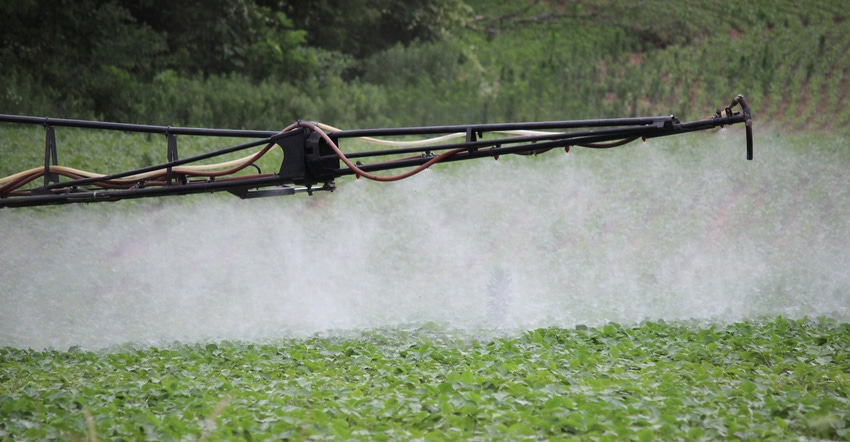
Illinois farmers who planted soybeans after June 1 are receiving an extension to apply dicamba-based herbicides 15 days past the original deadline set earlier this year for Illinois.
John Sullivan, director of the Illinois Department of Agriculture, says the decision to extend the deadline wasn’t made lightly, as it was put in place after a surge of off-target drift complaints were received by his office during 2018’s growing season. Still, with only 49% of soybeans planted as of June 10 in the state, compared to the five-year average of 97%, he and his team ultimately decided to give farmers and applicators more time.
“Whether it's soybeans, whether it's corn, whether it's trying to get hay put up this year, I think all farmers are in the same boat. The weather pattern is just making it a difficult year,” Sullivan says.
All the other dicamba restrictions, both state and federal, are still in place.
“The product dicamba can still only be applied up to 45 days after the planting date. So, for example, the soybeans that we planted in May, this extension would not apply to them because 45 days will have already been exceeded after June 1,” Sullivan says.
State-specific restrictions
Dicamba becomes more volatile as temperatures and humidity rise. However, despite the deadline pushback, Sullivan and his team believe other state-specific restrictions will help to limit off target drift in July. The department enacted additional restrictions on March 1 as part of a Special Local Needs label, which are in addition to federal EPA restrictions. Other state-specific rules include:
Wind. A prohibition on applying when wind is blowing toward adjacent residential areas.
Watch. Requiring applicators to check the FieldWatch sensitive crop registry before application.
Preserves. Maintaining the label-specified downwind buffer between the last treated row and the nearest downfield edge of any Illinois Nature Preserves Commission site.
Sullivan says he’s hopeful the mandatory education applicators have received from IDOA and the Illinois Fertilizer and Chemical Association will also help to limit dicamba drift.
“We've done a tremendous amount of education to try to teach the applicators and farmers how to handle this product, when to handle it, giving them as much direction as possible to make sure that they do it in a safe way,” Sullivan says. “We’re hopeful that additional training is going to pay off.”
As recently as June 3, IDOA’s Doug Owens told Prairie Farmer the department was monitoring the situation but had no plans to revise the cutoff date, despite pressure from farmers and farm organizations across the state.
Jean Payne, president of the Illinois Fertilizer and Chemical Association, says hers and several other ag groups met with the department last week to discuss the unprecedented late planting season. While IFCA supported the June 30 cutoff date, Payne says they also support IDOA and Sullivan.
“We know this was not an easy decision for Director Sullivan or for anyone in the ag industry,” she says. IFCA continues to remind farmers that there’s still a lot at stake regarding dicamba use in 2019.
Payne says concerns about reducing the number of drift complaints and about reducing damage to sensitive crops remain, no matter the cutoff date.
“We urge farmers to be proactive and communicate with their neighbors regarding their intentions to apply dicamba,” she adds. “Tensions remain high within the ag industry over the use of this technology. With the decision to extend the cutoff, the scrutiny on dicamba will be even more intense.”
For more on applying dicamba successfully in the late planting season, check out this story from University of Illinois weed scientist Aaron Hager.
About the Author(s)
You May Also Like




